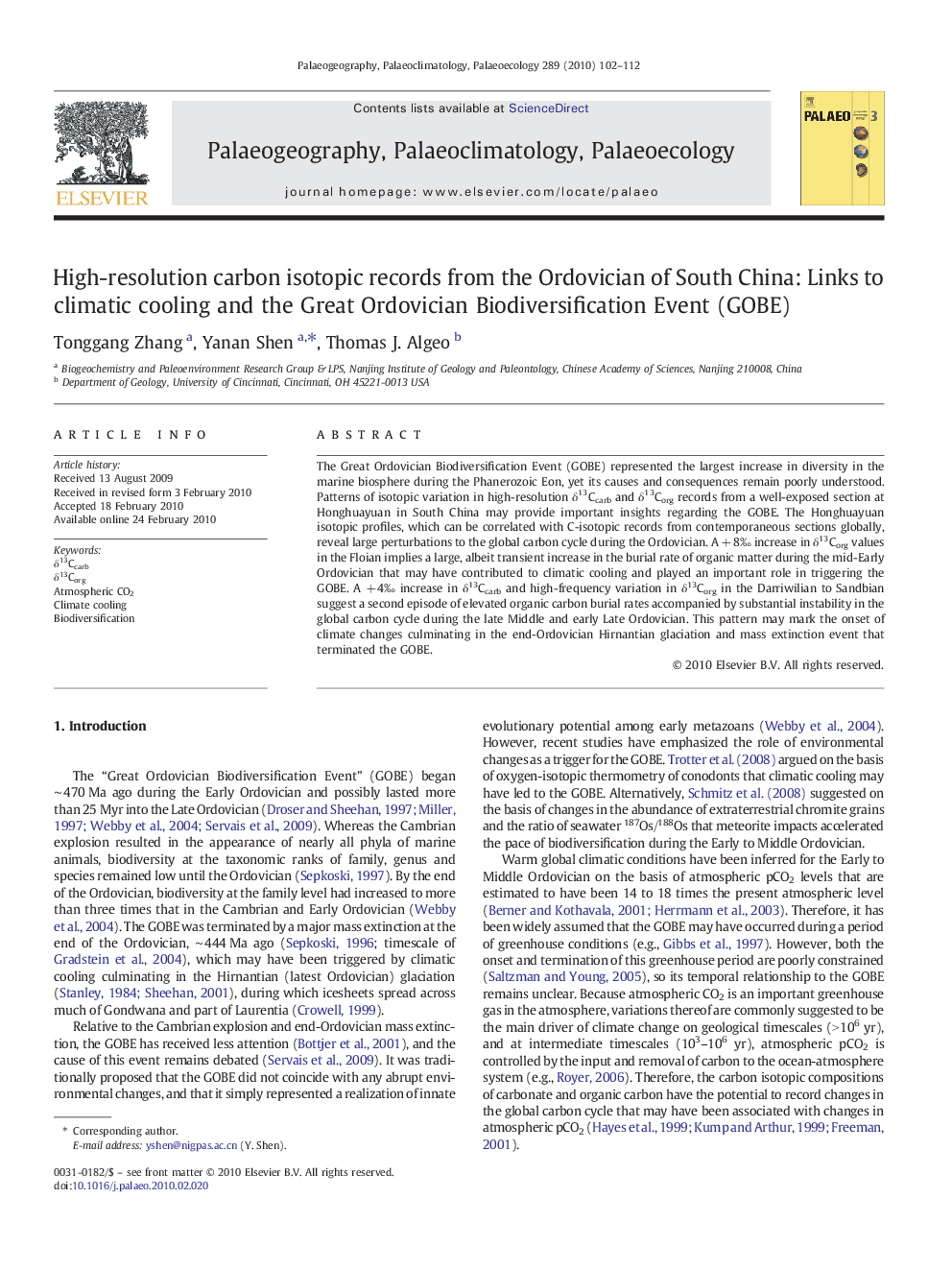| Article ID | Journal | Published Year | Pages | File Type |
|---|---|---|---|---|
| 4467798 | Palaeogeography, Palaeoclimatology, Palaeoecology | 2010 | 11 Pages |
The Great Ordovician Biodiversification Event (GOBE) represented the largest increase in diversity in the marine biosphere during the Phanerozoic Eon, yet its causes and consequences remain poorly understood. Patterns of isotopic variation in high-resolution δ13Ccarb and δ13Corg records from a well-exposed section at Honghuayuan in South China may provide important insights regarding the GOBE. The Honghuayuan isotopic profiles, which can be correlated with C-isotopic records from contemporaneous sections globally, reveal large perturbations to the global carbon cycle during the Ordovician. A + 8‰ increase in δ13Corg values in the Floian implies a large, albeit transient increase in the burial rate of organic matter during the mid-Early Ordovician that may have contributed to climatic cooling and played an important role in triggering the GOBE. A + 4‰ increase in δ13Ccarb and high-frequency variation in δ13Corg in the Darriwilian to Sandbian suggest a second episode of elevated organic carbon burial rates accompanied by substantial instability in the global carbon cycle during the late Middle and early Late Ordovician. This pattern may mark the onset of climate changes culminating in the end-Ordovician Hirnantian glaciation and mass extinction event that terminated the GOBE.
